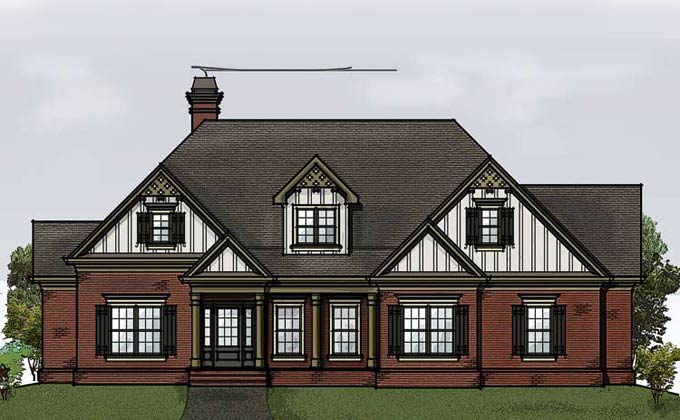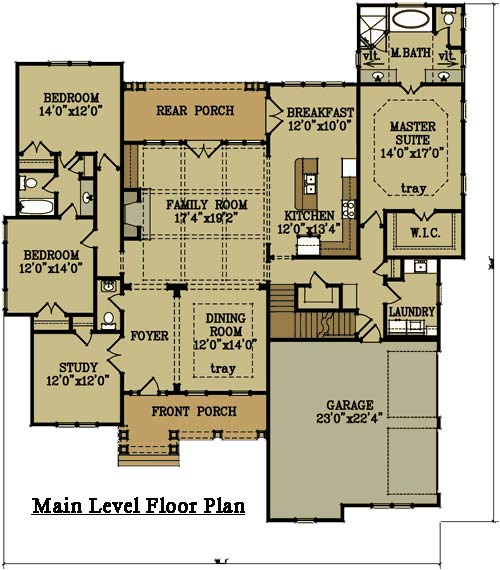

Residential House Plans
Main Floor:
2,475 sq. ftUpper Floor:
375 sq. ftLower Floor:
NoneHeated Area:
2,475 Sq. Ft.Width:
63'Depth:
70'9"Bedrooms:
4Bathrooms:
2 1/2Stories:
twoAdditional Rooms:
Bonus Room, Foyer, StudyGarage:
2 carOutdoor Spaces:
Front Porch, Rear PorchOther:
1st Floor Master, Walk in Closet, Cathedral CeilingRoof:
11'2Exterior Framing:
2x4 or 2x6Ceiling Height:
9'Home Style:
Brick, GarageLot Style:
Sloping Lot, Corner LotJohn’s Creek is a two car garage brick house plan. The foyer of the John’s Creek plan is flanked by a study on one side and a dining room, with tray ceiling on the other. The study has french doors and can double as a guest bedroom. The family room has a great view off the back of the house and has a 12 foot coffered ceiling. The kitchen and breakfast room are both open the the family room. The master suite has a tray ceiling, a walk in closet and a spacious bath with privacy room, soaking tub, separate vanities and a large shower. There are two other bedrooms and a jack and jill bath on the opposite side of the house from the master. A walk in pantry, a laundry room, and a 2 car garage complete the main level of this home.There is a bonus room over the garage. The lower level/basement can be finished to include a recreation room, wet bar, additional bedrooms and bath, and a theater room.There is a covered porch on the back of the house and a spacious deck can be added. Brick and board and batten are shown on the elevation but this house will look great with several different exterior materials.

Each set of plans includes:







Notes:
All sales on house plans and customization/modifications are final. No refunds or exchanges can be given once your order has started the fulfillment process. All house plans from maxhouseplans are designed to conform to the local codes when and where the original house was constructed. In addition to the house plans you order, you may also need a site plan that shows where the house is going to be located on the property. You might also need beams sized to accommodate roof loads specific to your region. Your home builder can usually help you with this. Many areas now have area-specific energy codes that also have to be followed. This normally involves filling out a simple form providing documentation that your house plans are in compliance. In some regions, there is a second step you will need to take to insure your house plans are in compliance with local codes. Some areas of North America have very strict engineering requirements. New York, New Jersey, Nevada, and parts of Illinois require review by a local professional as well as some other areas. If you are building in these areas, it is most likely you will need to hire a state licensed structural engineer to analyze the design and provide additional drawings and calculations required by your building department. If you aren’t sure, building departments typically have a handout they will give you listing all of the items they require to submit for and obtain a building permit. Additionally, stock plans do not have a professional stamp attached. If your building department requires one, they will only accept a stamp from a professional licensed in the state where you plan to build. In this case, you will need to take your house plans to a local engineer or architect for review and stamping.